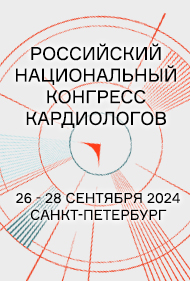One in eight patients require repeat catheter ablation for AF within 1 year
The rate of repeat catheter ablation for atrial fibrillation is high, especially in younger patients, according to data from a large U.S. national administrative claims database.
Peter A. Noseworthy, MD, senior associate consultant and assistant professor of medicine at the Mayo Clinic Kern Center for the Science of Health Care Delivery, Rochester, Minnesota, and colleagues studied trends and predictors of repeat catheter ablation for AF in a retrospective descriptive analysis.
The study sample consisted of 8,648 adults with AF (median age, 61 years; 71% men; 83% white) who underwent catheter ablation between 2004 and Sept. 30, 2014. Median follow-up was 1.1 years. The primary endpoint was repeat AF ablation.
During 14,280 person-years of follow-up, 14.6% of patients had repeat ablation, and 13% of repeat ablations were performed within the first 3 months of the original procedure. At 1 year, the rate of repeat ablation was 12.1%, and 20.6% of repeat ablations were performed within the first 3 months of the original procedure. The researchers calculated a median time to repeat ablation of 0.7 years.
Risk for repeat ablation was higher in younger age groups:
· aged 55-64 years: HR = 0.96 (95% CI, 0.84-1.09);
· aged 65-74 years: HR = 0.75 (95% CI, 0.61-0.91); and
· aged at least 75 years: HR = 0.55 (95% CI, 0.4-0.75).
Higher rates of repeat ablation were also observed in patients with higher household income (≥ $100,000 vs. < $40,000: HR = 1.24; 95% CI, 1-1.54), those who received treatment in the southern United States (HR = 1.15; 95% CI, 1-1.31) and those treated with antiarrhythmic medications (HR = 1.15; 95% CI, 1.01-1.31).
“Interestingly, it appears that demographic (particularly age) rather than clinical characteristics affect the likelihood of repeat ablation,” the researchers wrote.
Among patients followed for at least 5 years, the cumulative rate of repeat ablation was 40%.
“It may be that older patients (or their referring physicians) are reluctant to pursue additional ablation procedures,” the researchers wrote. “Indeed, previous small retrospective studies have demonstrated a graded increase in complication rates with older age.”
On the association of repeat ablations and antiarrhythmic drugs, the researchers hypothesized that it could be because patients with persistent arrhythmias, in general, may need more than one ablation to achieve normal sinus rhythm.
Noseworthy and colleagues concluded that within the first year of the original catheter ablation that approximately one in eight patients with AF will have a repeat procedure.
“Just being able to give patients this number is valuable,” Noseworthy told Cardiology Today. “Patients are increasingly cost conscious and they are very interested in knowing the likelihood that they might need a second procedure.”
“The implication for cardiologists is that we might expect if the first ablation does not work, younger patients may be more likely to opt for a repeat ablation while older patients may prefer other treatments,” Xiaoxi Yao, PhD, research associate at the Kern Center for the Science of Health Care Delivery, told Cardiology Today. – by Tracey Romero
Disclosure: Noseworthy reports no relevant financial disclosures. Please see the full study for a list of all other authors’ financial disclosures.
Source: www.healio.com






